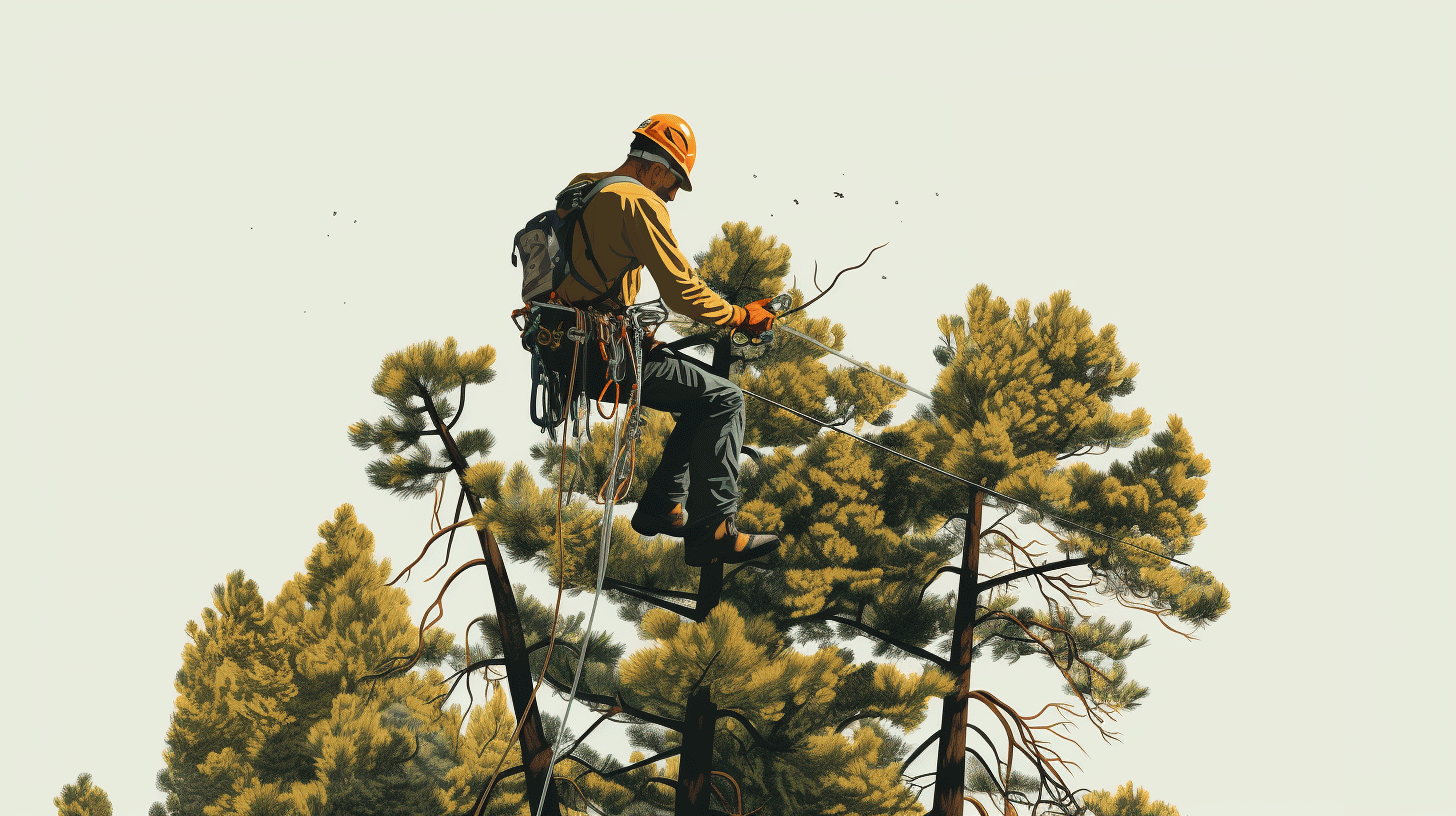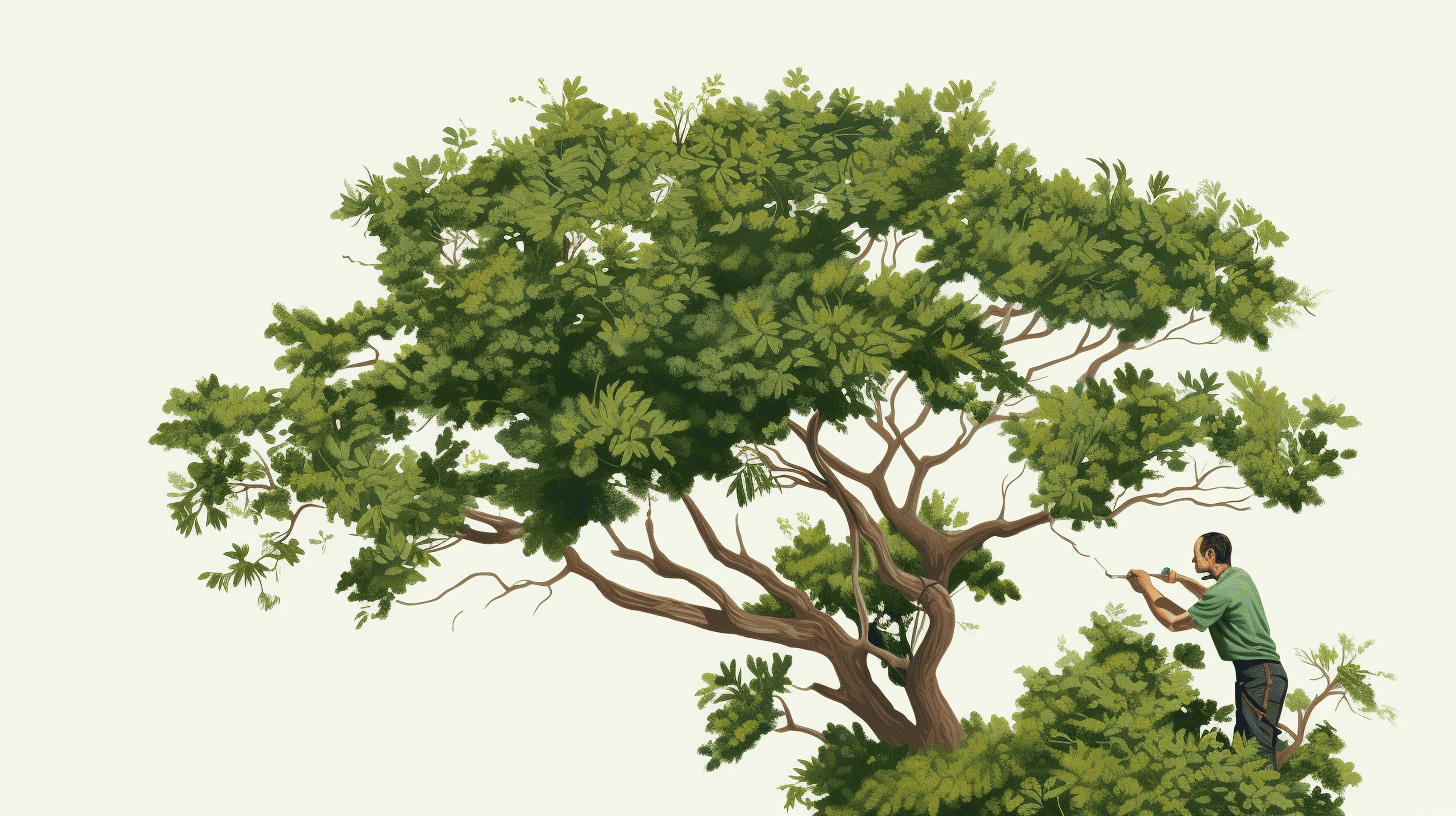Outdoor ventures, characterized by their connection with flora and fauna, are more than just a refreshing getaway. They play a crucial role in shaping several economies and influencing employment rates in the green sector. Particularly, they affect one occupation that has been steadily growing in the shadows - Arboriculture. An arborist or tree surgeon plays an irreplaceable role in maintaining and enhancing our green life, providing a unique blend of physical work in the heart of nature, usually cities' lungs. In this article, we delve into how outdoor activities impact arborist employment rates. We will explore the elements of arboriculture, dissect compensation details, and the opportunities it holds for career growth and specializations. We'll also unveil the health benefits of working in forestry and share insights on potential research and career pathways in arboriculture. Buckle up and get ready to discover the intertwined relationship between your leisurely outdoor recreations and the evergreen field of arboriculture.
Understanding Arboriculture
The beauty of arboriculture lies in its blend of physical prowess, in-depth knowledge, and sheer love for nature. Arboriculture is much more than just cutting and trimming trees; it is about understanding trees' growth, health, and the ecosystem they help create. Arborists, the professionals of arboriculture, are, in essence, tree doctors. They diagnose tree health, recommend treatments, and ensure that our green friends reach their full potential.
Varying Physical Activity
Being an arborist is not a profession for the faint of heart. Like a firefighter saving lives, arborists are often on the forefront of safeguarding the health of our trees. They perform physical activities that range from the agile climbing of towering trees to the intricate process of felling trees with control and precision. Working with varied tools of the trade like pruning shears, grapple saws, and chainsaws, they carry out tasks that require immense physical endurance, agile manoeuvring, and situational awareness.
Weather Conditions and Physical Demands
Moreover, arborists don’t have the luxury of selecting their working conditions. They work in the harshest of weathers, facing the chilling winds of winter or the scorching sun of summer. Often, their duties involve trudging through densely populated forests or plant growth, walking long distances and working in challenging terrains.
While the demands of the job are high, the sense of accomplishment is rewarding. It's not just about braving the climate or the physical exertion, it's about making a real difference in preserving the flora and fauna that surround us.
High-Risk Environment
By nature of the profession, arborists often find themselves working in high-risk environments. They are perched on top of trees, working at heights that can induce vertigo in the best of us, and handling equipment that can be dangerous if not used properly. They also risk exposure to harmful insects, poisonous plants, and disease. Their commitment to safety is unwavering, not out of obligation but out of the enormous respect they hold for their domain.
Understanding arboriculture is appreciating the men and women in this profession. They are the unsung heroes who play a pivotal role in maintaining and enhancing the natural beauty of our surroundings, combating the challenges of urbanisation and climate change. The profession of arboriculture embodies respect for nature, resilience in adversity, and an enduring love for trees. It is hard, it is demanding, but as any arborist would tell you, it is also immensely fulfilling.
Compensations in Arboriculture
Undoubtedly, arboriculture is a fascinating career choice for individuals passionate about plant life and the outdoors. But, of course, we all have bills to pay and lifestyles to maintain, and so it becomes imperative to discuss the monetary aspects of this profession. After all, apart from the love of trees, there's bound to be a more tangible reward for braving the elements and tackling the challenges that come with managing and conserving our leafy companions.
Median Annual Wage
In the arboriculture universe, financial rewards are nothing to scoff at. Looking at statistical data, it's impressive to ascertain that the median annual wage for logging workers stood grandly at $48,910 as of May 2023. This figure is testament enough to show that a career in this field can be a lucrative one. That's a decent pay package for a job that not only provides economic stability but also nurtures a strong emotional bond with nature!
Entry-Level Salaries
For the rookies looking to dig their roots into arboriculture, the starting salary can be a point of question. Well, the news is quite heartening on that front too. Entry-level jobs in arboriculture promise a starting salary around £20,000. This is an encouraging figure that allows newcomers to comfortably tread this path and passionately grow in their roles.
So, to draw a leaf out of this discussion, arboriculture presents an enticing mix of economic benefits alongside a rewarding personal journey. It’s an interesting pathway with compensation at par with many corporate jobs. However, the added thrill of working with nature and contributing to environmental conservation makes it a profession worth considering!
Career Growth and Specialization Opportunities
One of the fantastic aspects of choosing a career in arboriculture is the abundance of growth and specialization opportunities that await you. If you're looking for a field where incremental learning, constant growth, and professional deep dives not only exist but are also encouraged, then arboriculture may be the perfect match for your career ambitions.
Arboriculture offers a rich and varied landscape for those yearning to cultivate a career that can branch in numerous unique directions. From a budding arborist seeking to solidify their foundational knowledge, to a seasoned professional striving to scale new heights of expertise, there are myriad career-advancing avenues to explore.
Let's explore these opportunities in depth:
- Education: Education is fundamental in arboriculture. Whether you're considering a formal degree in a related field such as forestry, botany, or environmental science, or merely pursuing independent learning, continuous education is key. It often begins with a bachelor's degree but rarely ends there.
- Certifications: Arborists and tree care professionals may enhance their career prospects by attaining various industry certifications. These may include, among others, Certified Arborist, Tree Worker Climber Specialist, and Certified Tree Safety Professional. Certifications not just validate competency but also enable professionals to solidify their credibility in the field.
- Professionalism: Arboriculture is a field where maintaining standards of professionalism is paramount. This can be demonstrated through engagement with professional arboriculture organizations, adhering to industry best practices, and fostering a commitment to safety and ethical conduct.
"Career development in arboriculture is not a solitary journey - it's more like a dynamic ecosystem, rich in opportunities for growth and avenues for specialization. As professionals cultivate their knowledge and skills, they also contribute positively to the field. It's a symbiotic exchange of value that benefits the individual and the industry at large."
So, if you're contemplating a career in arboriculture, remember that the potential for growth and specialization is abundant. It's a journey worth embarking upon, not just for the prosperity of your own professional path but also for the valuable contribution you can make to this vibrant field.
Health Benefits of Forestry
Exploring the great outdoors has long been associated with a sense of tranquility, but did you know that visiting a forest has quantifiable health benefits? Yes, indeed. Both the physical and mental health aspects of our being can greatly benefit from consistent interaction with forestry. Armed with the wonders of science and countless research studies, we can now confidently assert the direct ties between our well-being and the natural world. Let's delve into it!
Physically, forestry provides us with an extensive playground for exercise, contributing to cardiovascular health, enhancing full-body strength, and promoting weight control. The great outdoors offer a range of recreational activities - from casual walks and vigorous hikes to adrenaline-pumping outdoor sports. Such engagements are not only enjoyable but directly contribute to our overall fitness.
- Fresh, unpolluted air: Forests are referred to as the 'lungs of the earth' for a reason! They help moderate oxygen levels and absorb harmful pollutants, providing us with cleaner, fresher air compared to urban areas.
- Variable, challenging terrain: The dynamic nature of forest grounds can engage different muscle groups, fostering balance, agility, and coordination.
- Natural light: Regular exposure to natural light can improve mood and sleep, boost vitamin D levels, and strengthen your immune system.
Mentally, forests have an inherent calming effect. The serene sights, restful sounds, and the inherent peace that come with wooded landscapes can be a potent stress reliever. Moreover, through forest immersion, we can practice mindfulness, reinforcing our ability to concentrate and foster a sense of peace.
- Reduced depression and anxiety: Multiple studies have shown that nature, especially forests, have a positive influence on reducing symptoms of depression and anxiety.
- Improved cognitive function: Time spent outdoors, specifically within a forest, can enhance concentration, memory, and creativity.
- Stress relief: The nature-induced calm can mitigate mental fatigue, reduce cortisol (the stress hormone) levels, and improve overall mood.
As awe-inspiring as this may appear, it's merely scratching the surface of the immense health benefits of forestry. The forest's therapeutic qualities - its unique ability to nudge our physical and mental states toward healthful equilibrium - makes it a definitive haven of wellness. It beckons us not merely for a visit but to develop a life-long relationship for our continuing well-being.
Remember, you don't need to be an experienced outdoor enthusiast to reap these benefits. The power of the forest lies in its availability to all. So why not tap into the natural health booster at your doorstep? Start exploring outdoor spaces, and witness the transformative power of forestry on your health first-hand.
Research Opportunities and Career Paths
We all adore the serene beauty and shade that lovely, age-old trees provide. Have you ever wondered what it takes to keep these large green friends in great shape? If you're fascinated by trees and love outdoor work, you may want to explore the field of arboriculture. It is an intriguing profession that offers abundant research opportunities and career paths.
Arboriculture, the study of trees and other perennial woody plants, remains a broad and dynamic field steeped in both science and art. Essential for maintaining our urban forests and green spaces, arborists work to enhance the health, safety, and aesthetic appeal of individual trees or entire forests, contributing to a greener and more environmentally sustainable world.
Diverse Career Paths in Arboriculture
The field of arboriculture offers diverse and engaging career paths, each critical to sustaining the health and longevity of our trees. Let's delve into some of the key roles that an aspiring arborist might consider:
- Tree Climber/Pruning Specialist: This hands-on role involves climbing trees for pruning, trimming, and overall tree management, often with the use of specialized tools. It's ideal for those who love physical work and wish to be close to nature.
- Plant Healthcare Technician: This analytical role involves diagnosing plant diseases and devising appropriate remedies. If you're a problem-solver at heart and want to save trees from diseases and pests, this might be the right role for you.
- Urban Forestry Worker: In this role, you work on maintaining trees in urban spaces and enforcing local laws related to tree planting, pruning, and removal. It's a role that combines practical skills with a regulatory perspective.
- Tree Consultant: This role often involves advising homeowners, corporate clients, or municipalities on tree health, planting decisions, and long-term arboricultural strategies.
Engaging Research Opportunities
Apart from these intriguing career paths, the field of arboriculture also offers multiple research opportunities. For those with a deep interest in science and contributing to the improvement of theories and practices which underpin tree care, research openings abound. These could focus on topics such as:
- Identifying new pests and diseases affecting trees
- Developing more efficient pruning techniques
- Innovating technology and machinery used in tree care
- Better understanding the impact of urban development on trees.
Arboriculture is a rewarding field providing various career paths and research opportunities. Engaging in the practice requires both science and sensitivity and offers a unique path to contributing to the environmental sustainability of our world. If you have the heart of an explorer, the curiosity of a scientist, and a love for the outdoors, this field could offer you a career that genuinely aligns with your passions.
Conclusion
Embarking on a career in arboriculture opens up avenues for personal growth, physical endurance, and environmental stewardship. It's a field that brings more to the table than what meets the eye. Beyond the physical demands, weather challenges, and high-risk environments, arborists consistently prove their tenacity and commitment to maintaining the health and aesthetics of our urban forests.
Moreover, the sparkling figures in respect of compensations, opportunities for specialization, and an overall positive career growth trajectory make it a worthwhile venture. The health benefits of working around trees and the significant contribution to the environmental conservation agenda is icing on the cake.
Whether you're an existing arborist or looking to join the industry, remember the importance of appropriate safety gear. Reliable work gear like the Chainsaw Safety Pants from Rain Gear Pro, offer protection and comfort in any weather, giving you the confidence to perform at your best. Crafted with attention to detail and designed to withstand the toughest conditions, they offer invaluable support for hardworking arborists everywhere.
Pursuing arboriculture is not just a career option - it's a call to action towards conservation, physical fitness, and unraveling the untamed beauty of our natural world. And therein lies the profound impact of outdoor activities on the arborist employment rate. The ball is in your court to utilize these benefits, excel in your line of work, and inspire others to follow suit.
Frequently Asked Questions
-
What are some outdoor activities that influence the arborist employment rate?
Some outdoor activities that influence the arborist employment rate include tree trimming, pruning, planting, removal, and maintenance. Additionally, activities related to landscaping, urban forestry, and environmental conservation also impact the demand for arborists.
-
Why do outdoor activities play a significant role in the arborist employment rate?
Outdoor activities play a significant role in the arborist employment rate because the job of an arborist primarily involves working with trees and green spaces. The need for tree care services increases with outdoor activities, such as landscaping projects, tree planting initiatives, and maintenance of parks and urban forests.
-
Do arborists have better job prospects when there are more outdoor activities?
Yes, arborists have better job prospects when there are more outdoor activities. Increased outdoor activities, such as construction projects, residential landscaping, and community greening initiatives, create a higher demand for arborists and tree care services.
-
What are the benefits of outdoor activities for arborists?
Outdoor activities provide several benefits for arborists, including exposure to diverse work environments, opportunities for skill development, physical fitness, and a sense of connection with nature. Moreover, outdoor activities help arborists stay updated with industry trends and advancements.
-
How can arborists prepare for increased employment opportunities during peak outdoor activity seasons?
Arborists can prepare for increased employment opportunities during peak outdoor activity seasons by expanding their knowledge and skills through continuous education, networking with industry professionals, joining relevant associations, and staying up-to-date with the latest tree care practices and equipment.





















Leave a comment
This site is protected by hCaptcha and the hCaptcha Privacy Policy and Terms of Service apply.